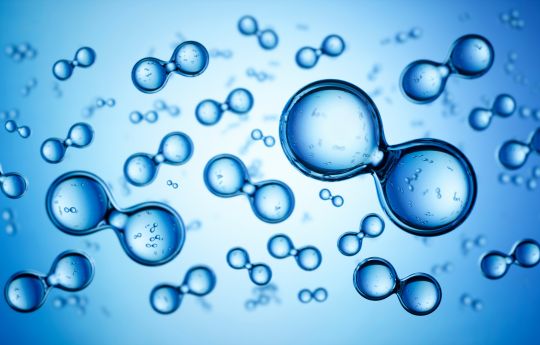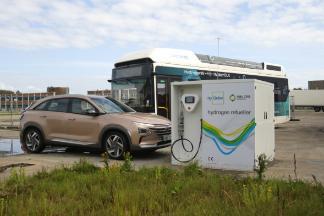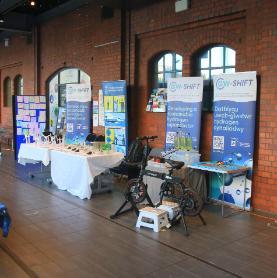
Dr James Courtney is a Lecturer in Hydrogen at Swansea University. Having found his passion for environmental science at an early age, James has worked with Hydrogen, Energy and Electrochemistry for almost 20 years before joining Swansea University in 2022.
Tell me a little about your role…
I’m a lecturer in hydrogen at Swansea University, Chemical Engineering. My role is to look at hydrogen technologies and to help companies and students at Swansea University to create impactful innovation through research, learning, new skills, initiatives, and networking. My research looks at critical materials across the whole value chain of hydrogen. Hydrogen initially relies on a lot of precious metals for catalysis whether that’s producing hydrogen or converting hydrogen into electricity. Looking at how to recycle and regenerate these is an important aspect as we look to transition to net zero. One of my focuses is looking at polluted environments and how we can remediate those for economic gain. I encourage fun projects to create an impact on how we think. For example, taking a washed-up iron slag and seeing if we can regenerate it to its metal form to use as a catalyst for producing hydrogen, plus it’s a win for the environment as we’ve “re-used” a waste material.
Why hydrogen?
I’ve been working in hydrogen for about 20 years. The first time I built a hydrogen device was in my garage at the age of 16 and it all leads back to my grandfather, a chemist, who got me into chemistry and thinking about the environment. Since then, I’ve always thought hydrogen was a great circular example of how to transport energy around the globe. I studied biofuel cells in my undergraduate and then investigated this further for my master’s and PhD at the Hydrogen Research Centre in Birmingham. It’s the question of how we preserve and increase the quality of life that we’ve come to expect without damaging our futures that drives me. I think hydrogen is and should be a big part of that conversation alongside other technologies such as batteries and wind turbines.
There’s often this issue of pitting net-zero technologies against one another, and I don’t think this is the best way to look at the environmental argument. Whether you’re looking at carbon capture, batteries, solar, or hydrogen, all options result in a better environmental impact than the resources we’re currently using, so all need to be considered. While I’d argue for hydrogen, there’s a possibility that it won’t currently work for all environments, so let’s look at the other solutions too. If the environment is benefiting from these new net-zero technologies, then it’s a win.
What is sustainability to you?
The reality is, nothing is 100% good or bad, but we need to strive for better. If we’re pushing for sustainability and can argue that we’re doing everything possible to better the planet, then this is the right attitude to tackling the discussion. We need to have friendly arguments around the subject so we can continue to grow. Recently I attended an event using carbon-neutral water, and it led to a discussion about whether this was honest marketing and whether it really mattered in the grand scheme of things. It’s critical to understand the importance of creating sustainable and circular processes/products, not just attach a “green” sticker on anything remotely environmentally friendly.
Current projects
We’re currently linking up hydrogen across South Wales and into the South-West. I’m part of the GW-SHIFT which is a PBIAA, effectively trying to develop a cluster where we can put people in touch with each other and develop ideas to allow hydrogen to flourish as a base technology. Within that, we’re looking at supporting both with knowledge and funding small research grants to move products forward and to deliver impact in the area. We’re seeing real impact delivered locally, whether that’s in education, through going to schools to make people aware of available hydrogen technology, or whether it’s enabling people with ideas to go towards a spin-out and launch their own company. That’s where I see us linking up with the NP BioHUB. It’s a similar type of approach and they’re complimentary of each other as we can share networks and broaden our reach. One of the great things about hydrogen is how democratic it can be, as there is a plethora of ways we can make it, including biological. Using bacteria and algae in these processes to create hydrogen, break down waste products or even recapture lost catalysts. From doing this we can also lean into the expertise within the NP BioHUB.
We’ve been working with Dr Alla Silkina and Dr Emily Preedy to develop an idea on how to take some of the algal biomass that has captured carbon and understand whether we can then turn this into a hydrogen and carbon product. This would enhance the credibility of that carbon capture because it can capture and utilise the carbon perhaps for a longer period and would result in multiple different products. We’re also working with Dr Steve Slocombe to see if algae can produce hydrogen in a local environment. It’s great to be able to form these collaborations through the University and specifically within the BioHUB and CARI (Climate Action Research Institute).
What can you offer GEC companies?
If there’s any way of thinking about hydrogen in their value chain, the GW shift and BioHUB space can help drive that conversation about the technology needed, as well as how we can help them achieve their goals. It doesn’t have to be industry specific, whether you’re a bakery that might have leftover yeast from dough that can become a hydrogen biomass material or someone within the regenerative energy market, we’re here for all types of discussions.
In essence, I’m a hydrogen expert who can either help you or redirect you to the best person for the job. So, if you have any questions about hydrogen, please don’t hesitate to reach out to me at j.m.courtney@swansea.ac.uk.


